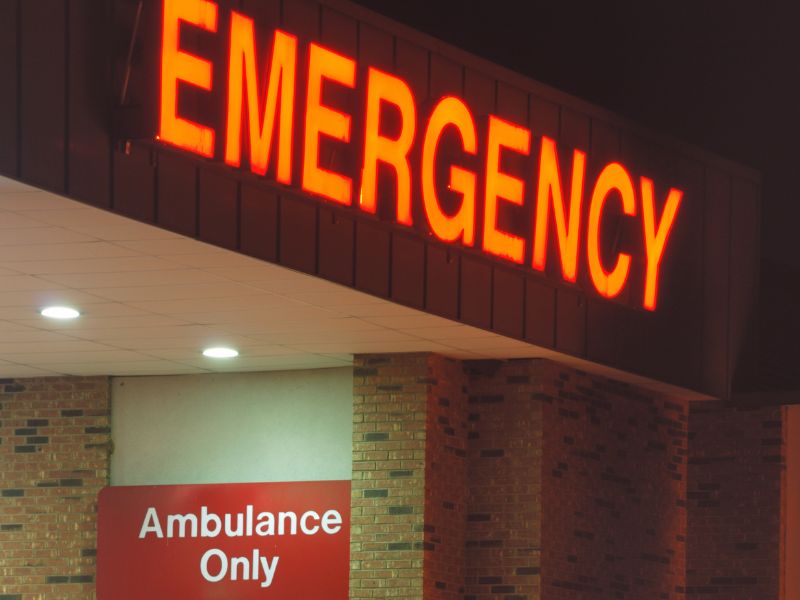Hospital emergency codes are a set of standardized codes used in healthcare facilities to alert staff about various types of emergencies or incidents.
These codes are often announced over the hospital’s public address system, and staff members are trained to respond accordingly to each type of emergency.
On this page, I will explain Hospital Code 3, Code C & Code 11 in USA hospitals and what they mean in medical terms.
What Is Code 3 In Hospital?
Code 3 in a hospital means that an ambulance with an emergency medical technician is rushing to an emergency with their lights and sirens flashing and sounding.
It’s like when you see an ambulance or police car rushing to help someone quickly.
When it is activated, medical personnel mobilize swiftly and efficiently. They prioritize rapid intervention to address life-threatening emergencies.
Basically, it signals a heightened state of readiness, where every second counts in delivering timely medical care and potentially saving lives.
Hospital Code 8
Hospital code 8 is used to signal a specific emergency, like a fire or a situation involving a violent patient. It’s a way for hospital staff to quickly communicate and respond to these urgent incidents.
It’s crucial to familiarize yourself with the specific codes used by the hospital you are in, as they may have their own set of codes and protocols.
Hospital staff must know these codes. They can then quickly and effectively respond in emergencies.
When I hear Code 8 in a hospital, I know it’s serious. Everyone should be prepared to handle the emergency.
Hospital Code 11 Meaning
Code 11 in hospitals is not a universal standard in healthcare, but rather a term that can vary from one hospital to another.
In simpler terms, hospital code 11 means different things, such as a security alert, a medical emergency, or a specific protocol within that particular hospital’s system.
To understand its precise meaning, you’d need to refer to the hospital’s internal documentation or ask staff familiar with their protocols.
Hospital Code 5
Code 5 in a hospital means that often signals the activation of a Public or Employee Emergency Response Team.
You know that these teams are trained to handle a wide range of emergencies, from medical crises to natural disasters.
Their primary role is to provide immediate assistance and support in maintaining safety and order within the hospital premises.

Hospital Code C
Hospital Code C means the closure of the Emergency Department (ED). This can occur due to various reasons, like resource limitations, overwhelming patient influx, or decontamination procedures after a hazardous material incident.
The exact reason for closure is usually communicated alongside the code or through hospital announcements.
See Also: Hospital Code Orange
Key Benefits Of Using Hospital Emergency Codes
- Rapid response
Hospital Codes help to expedite the response time to emergencies. These codes immediately alert relevant personnel to the nature and location of the incident.
This can be critical in situations where time is of the essence, such as cardiac arrest or stroke.
- Coordinated action
These Codes ensure that all responders know exactly what to do and where to go. This makes emergency response coordinated and effective.
This can prevent confusion and delays, which is critical in emergencies.
- Reduced panic
As you can see, using emergency-coded language can help to minimize panic among patients, visitors, and staff who may not understand the nature of the emergency.
Now that you know all about the benefits of emergency codes, let’s talk about the history of hospital codes in the U.S.A
Hospital Emergency Codes in the USA
Hospital emergency codes are like secret signals for when something goes wrong in the hospital. These codes are super important because they help everyone know what to do fast.
For example, if there was a fire or someone got hurt, you’d want everyone to act quickly, right?
Before, these codes were all over the place. Different hospitals had different codes, which was confusing and sometimes even caused bad things to happen.
To fix this mess, people decided to make a standard set of codes that every hospital could use.
This way, everyone could understand emergency codes easily and respond the right way. It all started in the early 2000s when there was a big shooting in a hospital. After that, people got serious about making things better.
States like Maryland led the charge by making it a rule for hospitals to use the same codes.
Other states followed, and by 2020, lots of places were using emergency codes for their alerts.
This made it easier for everyone to know what was going on during emergencies. Plus, it meant fewer mistakes and more safety for patients and staff.





